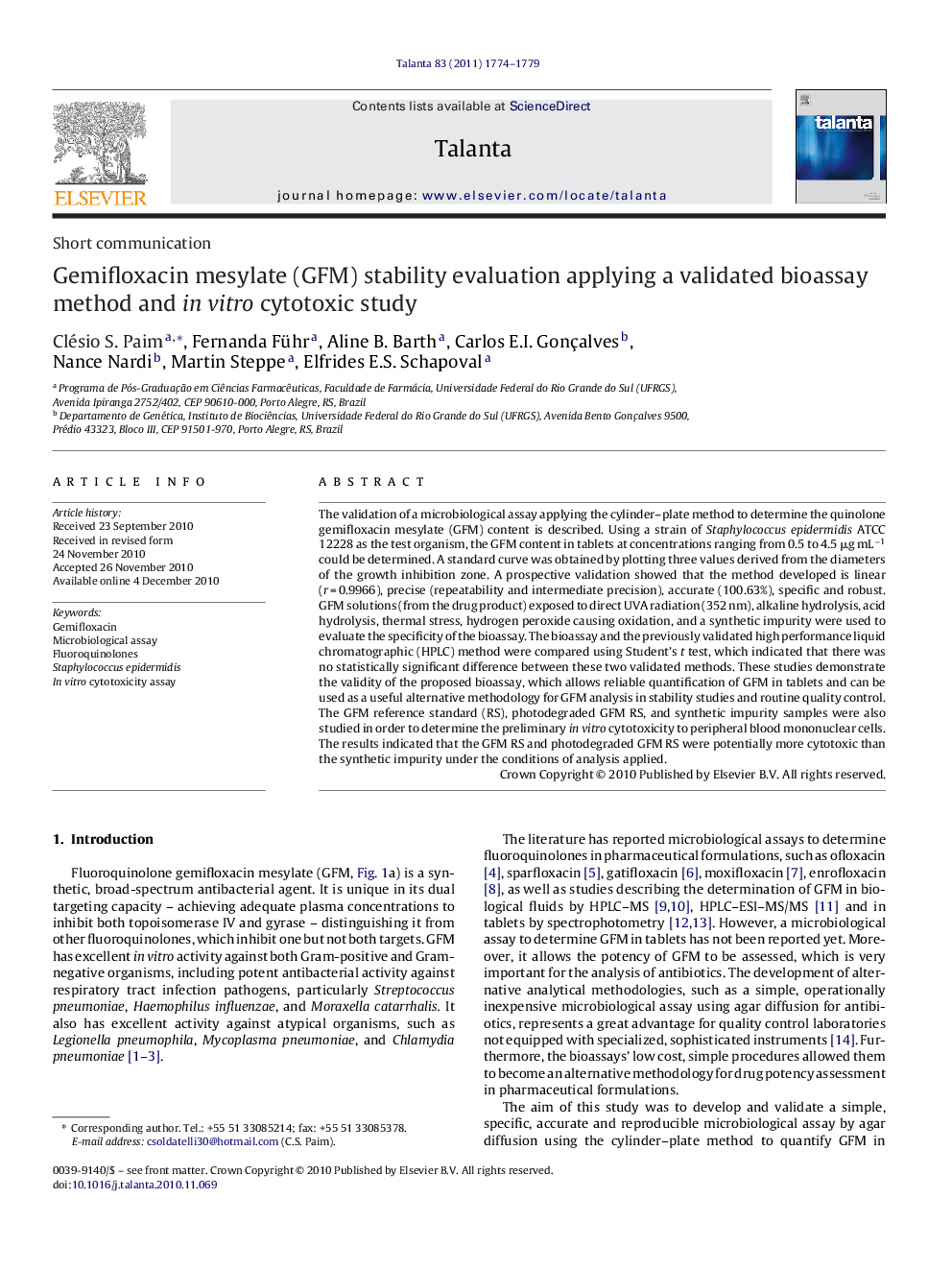| Article ID | Journal | Published Year | Pages | File Type |
|---|---|---|---|---|
| 10559595 | Talanta | 2011 | 6 Pages |
Abstract
The validation of a microbiological assay applying the cylinder-plate method to determine the quinolone gemifloxacin mesylate (GFM) content is described. Using a strain of Staphylococcus epidermidis ATCC 12228 as the test organism, the GFM content in tablets at concentrations ranging from 0.5 to 4.5 μg mLâ1 could be determined. A standard curve was obtained by plotting three values derived from the diameters of the growth inhibition zone. A prospective validation showed that the method developed is linear (r = 0.9966), precise (repeatability and intermediate precision), accurate (100.63%), specific and robust. GFM solutions (from the drug product) exposed to direct UVA radiation (352 nm), alkaline hydrolysis, acid hydrolysis, thermal stress, hydrogen peroxide causing oxidation, and a synthetic impurity were used to evaluate the specificity of the bioassay. The bioassay and the previously validated high performance liquid chromatographic (HPLC) method were compared using Student's t test, which indicated that there was no statistically significant difference between these two validated methods. These studies demonstrate the validity of the proposed bioassay, which allows reliable quantification of GFM in tablets and can be used as a useful alternative methodology for GFM analysis in stability studies and routine quality control. The GFM reference standard (RS), photodegraded GFM RS, and synthetic impurity samples were also studied in order to determine the preliminary in vitro cytotoxicity to peripheral blood mononuclear cells. The results indicated that the GFM RS and photodegraded GFM RS were potentially more cytotoxic than the synthetic impurity under the conditions of analysis applied.
Keywords
Related Topics
Physical Sciences and Engineering
Chemistry
Analytical Chemistry
Authors
Clésio S. Paim, Fernanda Führ, Aline B. Barth, Carlos E.I. Gonçalves, Nance Nardi, Martin Steppe, Elfrides E.S. Schapoval,
